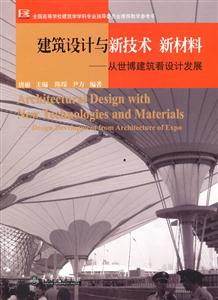
作者:OsmanAttmann[著]
页数:352
出版社:哈尔滨工业大学出版社
出版日期:2014
ISBN:9787560345017
电子书格式:pdf/epub/txt
内容简介
《绿色建筑:新技术与新材料》绿色建筑从概念上讲,主要包含了3个方面:①节能,主要是减少各种资源的浪费;②保护环境,减少环境污染,减少二氧化碳的排放;③满足人们使用上的要求,为人们提供“健康、适用、高效”的使用空间。 要建造绿色建筑,必须坚持“以人为本”的建设理念,以市场需求为导向,以安全、舒适、经济、健康、美观为标准,从平面规划、景观配置、户型结构、功能配套、建筑质量到建筑建设的全过程,引用健康、环保及可持续发展的新理念,采用大量先进、成熟的新技术新材料,才能达到建设一个环境优美、规划合理、适用方便、超低能耗、高舒适度、质量优良的建筑。
本书特色
由埃特曼所著的《绿色建筑(新技术与新材料影印版)》内容包括:绿色建筑的定义、操作和历史;绿色建筑的评估系统,包括LEED标准和BREEAM;太阳能、地热、风能、水能、燃料电池等绿色能源生产技术;绿色绝缘、采暖通风与空调(HVAC)、水和垃圾管理技术;被动太能能设计方法;绿色材料、包括生物材料、生物高聚物、生物塑料和合成物;热、光和刺激-反应智能材料;纳米材料;100余个案例分析,可供相关读者阅读学习。
目录
preface
acknowledgments
chapter 1 green architecture:overview
introduction: ecosystems and natural environments
human impact on the natural environment
architectural impact on the natural environment
responsibility of architecture
chapter 2 definitions and operationalizations
of green architecture
sustainability
sustainable architecture
ecology
ecological architecture
performance
green
measurement of green
chapter 3 brief history of green architecture
early beginnings
shelters and early technology
population increase
ecological/environmental changes
the rise of environmental awareness
conservation movement
the birth of modern environmentalism and specialized movements
chapter 4 green technologies: energy generation
energy generation
bioenergy
solar energy
geothermal energy
wind energy
hydro energy
blue energy
fuel cell energy
hybrid systems
chapter 5 green technologies: energy retention
insulation systems
heating/cooling systems
ventilation systems
water and waste management systems
chapter 6 green materials
biomaterials/biotic materials
composites
chapter 7 smart materials
thermo-responsive materials
light-responsive materials
stimulus (force)-responsive materials
nanomaterials
chapter 8 case studies
advanced green buildings
active solar buildings
passive solar buildings
modular and mobile systems
solar decathlon projects
solar decathlon
solar decathlon
solar decathlon
bibliography
index
acknowledgments
chapter 1 green architecture:overview
introduction: ecosystems and natural environments
human impact on the natural environment
architectural impact on the natural environment
responsibility of architecture
chapter 2 definitions and operationalizations
of green architecture
sustainability
sustainable architecture
ecology
ecological architecture
performance
green
measurement of green
chapter 3 brief history of green architecture
early beginnings
shelters and early technology
population increase
ecological/environmental changes
the rise of environmental awareness
conservation movement
the birth of modern environmentalism and specialized movements
chapter 4 green technologies: energy generation
energy generation
bioenergy
solar energy
geothermal energy
wind energy
hydro energy
blue energy
fuel cell energy
hybrid systems
chapter 5 green technologies: energy retention
insulation systems
heating/cooling systems
ventilation systems
water and waste management systems
chapter 6 green materials
biomaterials/biotic materials
composites
chapter 7 smart materials
thermo-responsive materials
light-responsive materials
stimulus (force)-responsive materials
nanomaterials
chapter 8 case studies
advanced green buildings
active solar buildings
passive solar buildings
modular and mobile systems
solar decathlon projects
solar decathlon
solar decathlon
solar decathlon
bibliography
index















